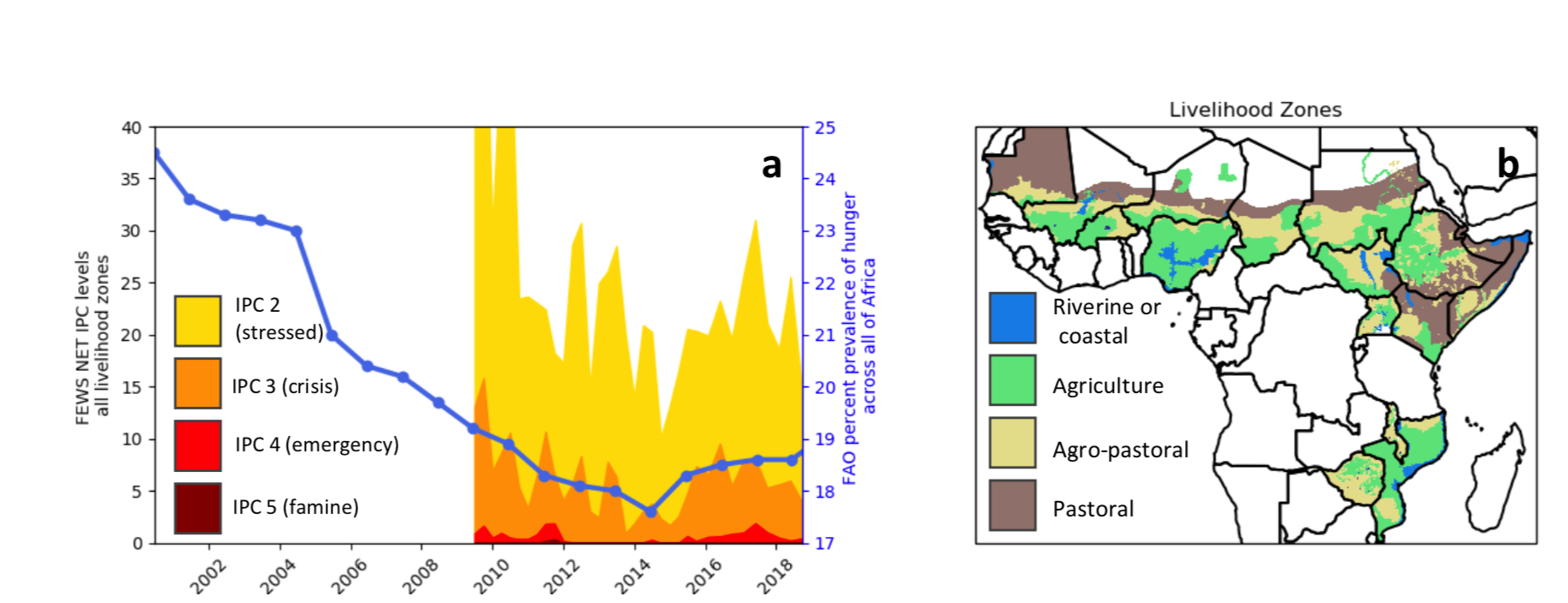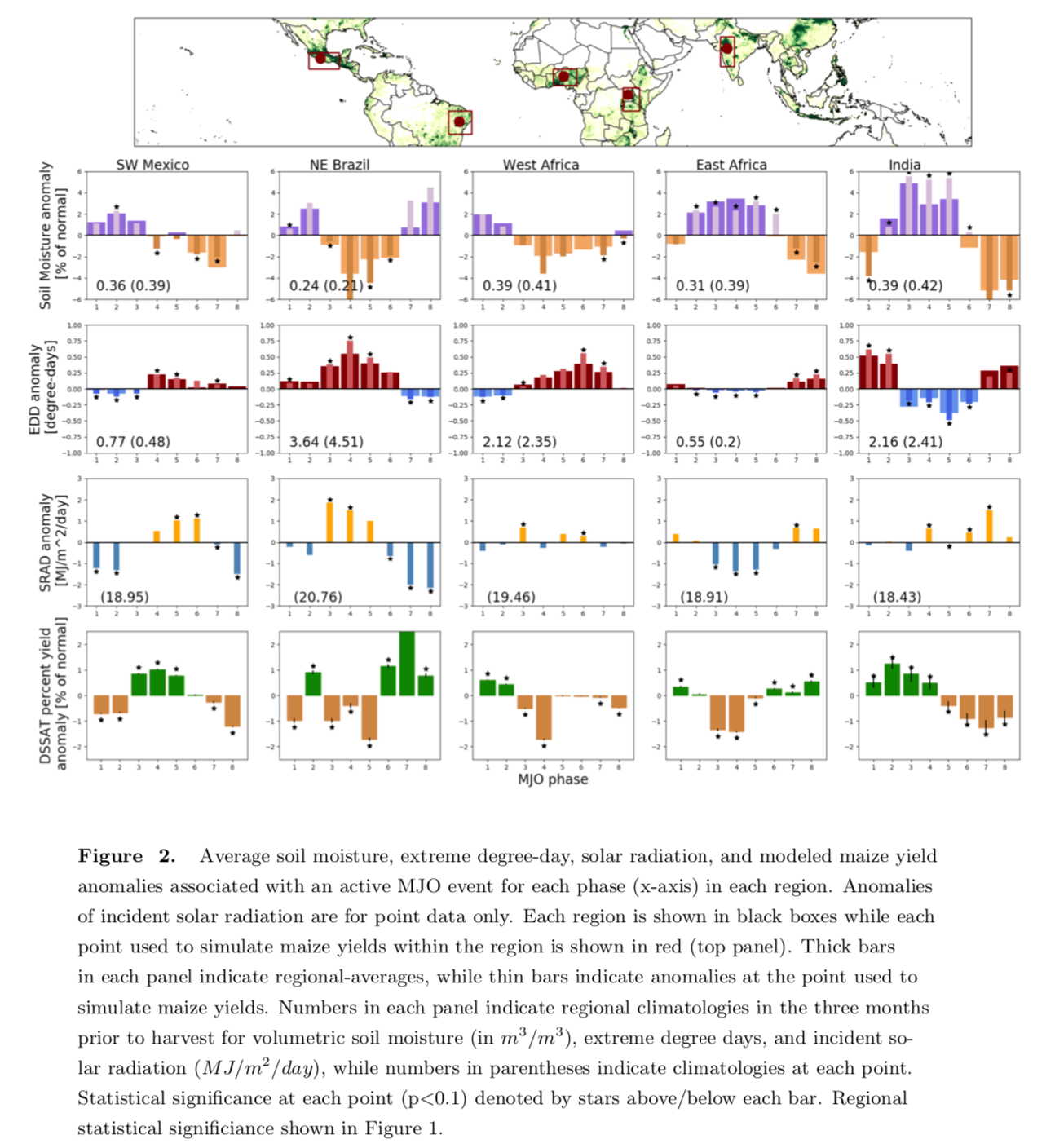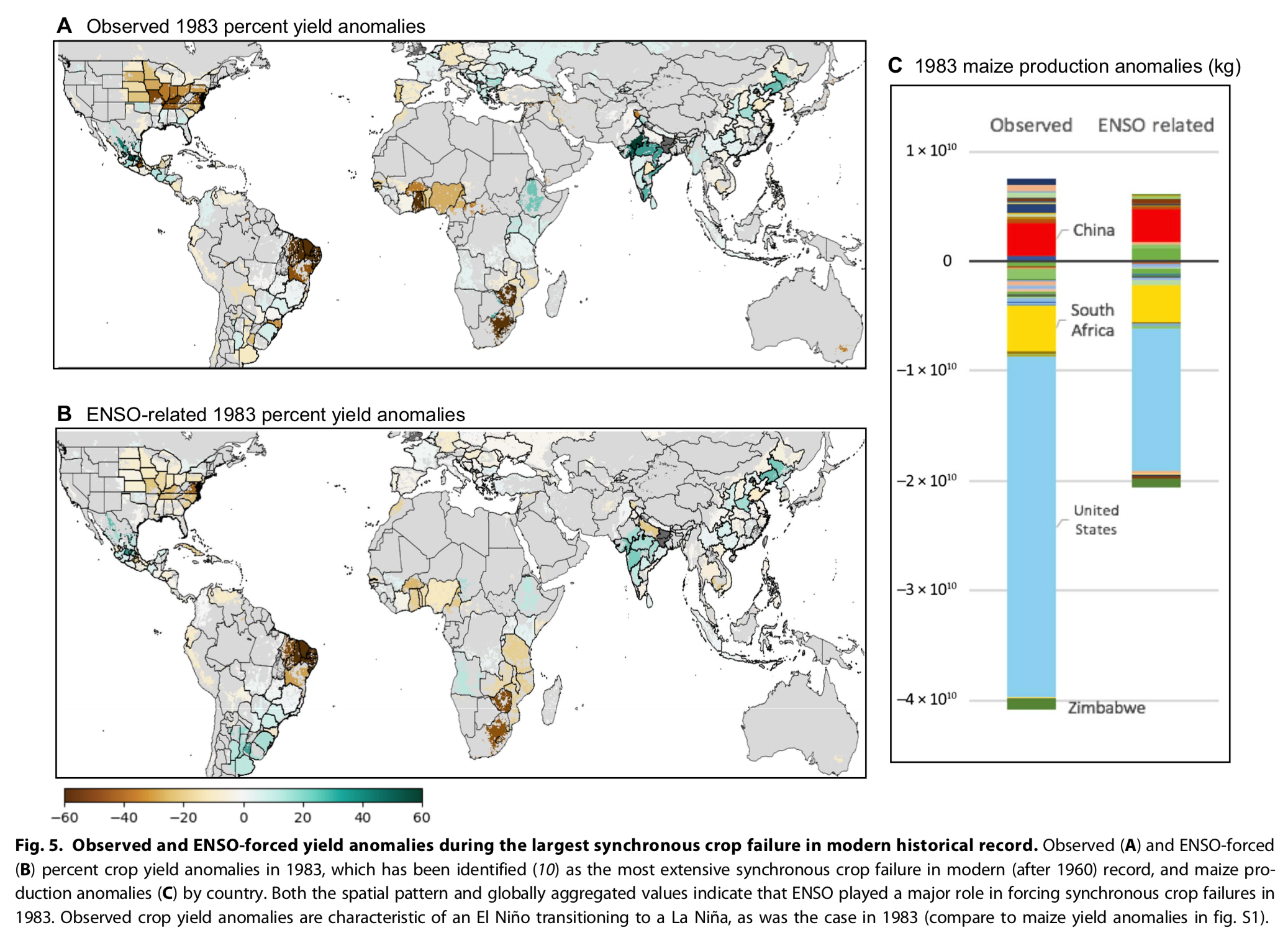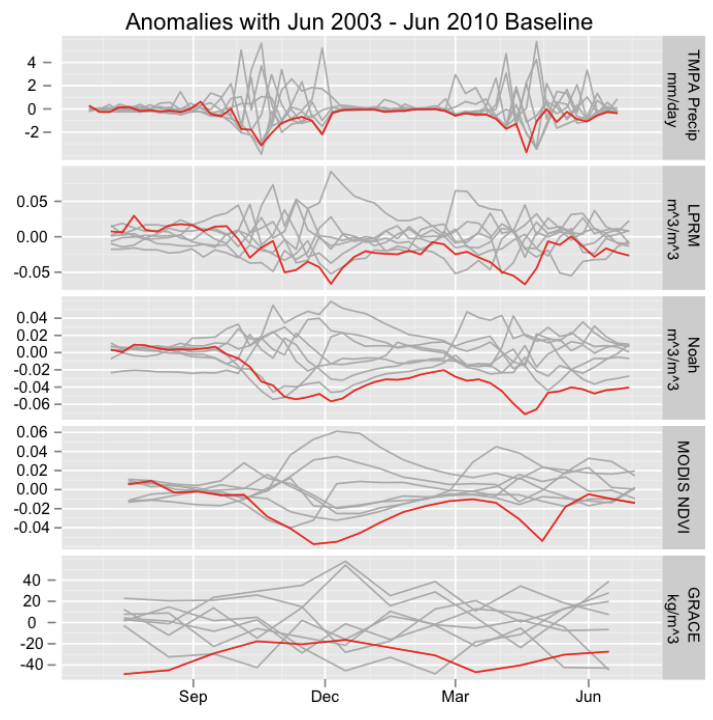Weston Buckley Anderson (he/him)
Assistant Research Professor
University of Maryland, Department of Geographical Sciences
weston [at] umd.edu
I’m a climate scientist studying the dynamics of climate variability and its relation to food security using reanalysis products, remote sensing observations and model simulations. I’ve recently been working on how global-scale modes of climate variability pose a risk to food production and food security. I am currently an Assistant Research Professor working on climate and food security at the University of Maryland. For more information on my professional activities and my research see my Publications page, Google Scholar, or see my CV
Food security crises in Africa

Conflict, drought, and locusts have been leading concerns for African food security in recent years, but the relative importance and spatiotemporal scales of crises resulting from each hazard is poorly characterized. Here we use continuous, subnational data from Sub-Saharan Africa to characterize how food crises differ according to livelihood strategy in response to each hazard. We find that when exposed to drought, pastoralists experienced more widespread, severe, and long-lasting food crises compared to those in agricultural zones. From 2009-2013 drought was the primary trigger of food security crises in all non-riverine zones; after 2013 conflict-related food security crises become prevalent. The few confirmed famines coincided with both conflict and drought.
Anderson, W.B., Taylor, C., McDermid, S., Schlenker, W., Seager, R., Nébié, E., Cottier, F., de Sherbinin, A., Mendeloff D., Markey, K. (2021): Violent conflict exacerbated drought-related food insecurity between 2009 and 2019 in sub-Saharan Africa. DOI: 10.1038/s43016-021-00327-4. PDF
The Madden-Julian Oscillation and crop yields

While many Madden-Julian Oscillation (MJO) teleconnections are well documented, the significance of these teleconnections to agriculture is not well understood. We first estimate how the MJO affects the climate during crop flowering seasons, when crops are particularly vulnerable to abiotic stress. We then use crop models and observational yield statistics to demonstrate that in dry, hot, environments the MJO can lead to crop failures by reducing precipitation, decreasing soil moisture, and increasing extreme heat. In wetter, cooler environments – where water stress is less common – MJO-forced decreases in rainfall bring increases in solar radiation that benefits crop yields.
Anderson, W.B., Han, E., Baethgen, W., Goddard, L., Muñoz, Á.G., and Robertson, A. (2020): The Madden-Julian Oscillation affects maize yields throughout the tropics and subtropics. Geophysical Research Letters
Anderson, W.B., Muñoz, Á.G., Goddard, L, Baethgen, W., and Chourio, X. (2020): Madden-Julian Oscillation (MJO) teleconnections to crop growing seasons. Climate Dynamics. 1-17
Simultaneous crop failures and climate-forced production variability

Large-scale modes of climate variability can force widespread crop yield anomalies, and are therefore often presented as a risk to food security. We find that the El Niño Southern Oscillation (ENSO), the Indian Ocean Dipole (IOD), tropical Atlantic variability (TAV) and the North Atlantic Oscillation (NAO) together account for 18%, 7% and 6% of globally aggregated maize, soybean and wheat production variability, respectively. The lower fractions of global-scale soybean and wheat production variability result from significant but offsetting climate-forced production anomalies. All climate modes are important in at least one region studied. In 1983, ENSO, the only mode capable of forcing globally-synchronous crop failures, was responsible for the largest synchronous crop failure in the modern historical record. Our results provide the basis for monitoring, and potentially predicting, simultaneous crop failures.
Anderson, W.B., Seager, R., Baethgen, W., Cane, M, and You, L. (2019): Synchronous crop failures and climate-forced yield variability. Science Advances, 5 (7), eaaw1976.
The El Niño Southern Oscillation and agriculture
Below is a collection of research projects focused on ENSO and agriculture
ENSO Review: Climate impacts of the El Niño Southern Oscillation on South America

This is review article on the varied climate impacts of ENSO on South America, and why those impacts are important to society. It was written by a team of exceptional South American scientists, who generously included myself as an early career scientist.
Cai, W, …Anderson, W.B….et al. (2020): Impact of El Niño-Southern Oscillation on South America in a warming climate. Nature Reviews Earth & Environment PDF
The global-scale structure of the risk posed by ENSO to agriculture

The El Niño Southern Oscillation (ENSO) has proven to be a major driver of global crop yield variability, at times responsible for simultaneous crop failures in multiple countries. ENSO and its associated teleconnections evolve over multiple years at a basin-wide scale. These analyses are the first attempt to characterize the structure of the risk posed by ENSO teleconnections to wheat, maize and soybean production.
Anderson, W.B., Seager, R., Baethgen, W., and Cane, M (2018) : Trans-Pacific ENSO teleconnections pose a correlated risk to agriculture. Agriculture and Forest Meteorology, 262: 298-309, doi:10.1016/j.agrformet.2018.07.023 pdf
Anderson, W.B., Seager, R., Baethgen, W., and Cane, M, (2016): Life-cycles of agriculturally relevant ENSO teleconnections in North and South America. Int. J. Climatol, doi:10.1002/joc.4916 pdf
Anderson, W.B., Seager, R., Baethgen, W., and Cane, M, (2017): Crop production variability in North and South America forced by life-cycles of the El Niño Southern Oscillation. Agriculture and Forest Meteorology, 239, 151-165 pdf
Drought Monitoring in East Africa

Drought in East Africa is a recurring phenomenon with significant humanitarian impacts. Given the steep climatic gradients, topographic contrasts and general data scarcity that characterizes the region, there is a need for spatially distributed, remotely derived monitoring systems to inform national and international drought response. In this analysis we apply a suite of remote monitoring techniques to characterize the temporal and spatial evolution of the2010–2011 Horn of Africa drought.
Anderson, W.B., Zaitchik, B.F., Hain, C.R., Anderson, M.C., Yilmaz, M.T., Mecikalski, J., and Schultz, L. (2012) Towards an integrated soil moisture drought monitor for East Africa, Hydrol. Earth Syst. Sci., 16, 2893-2913, doi:10.5194/hess-16-2893-2012. pdf
